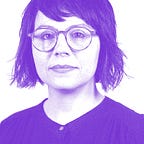What kind of art is happening in Houston now that will be talked about in 40 years?
I recently had the pleasure of attending a conversation on self-taught artists and community art at The Menil Collection in Houston. The discussion brought up creators of ‘visionary art’ around the city such as those of The Orange Show, Beer Can House, Art Cars, and The Flower Man. The room seemed to be filled with much nostalgia for where the city was going from roughly 70s to current time in this subculture of art. There was much to consider in looking back at the work of the non-artist artists and their earlier influence on the city.
A good question was asked of the speakers (admittedly one I’ve considered myself about art and making in general):
Is there art today that we will be talking about this way in the next 40 years?
The responses ironically related to the antithesis of the art at hand and centered around all educated artists in structured studio environments and galleries. To me, it was apparent that in this age of extreme, incessant digital connectivity and spectacle of the highly curated image, the self-taught artist as we know her or him is becoming a thing of the past.
It’s as if the city moved on in its machine of progress, forgetting or simply just leaving behind the legacy and celebration of the gritty, truly original culture. We’ve been busy with the internet of things and forgot a little part of our cultural soul.
The individuals that made spaces such as The Orange Show were a specific product of time and place. This afforded a lack of awareness for any art movements and their respective positions in any art world. They were not driven by an academic artistic need to problem solve figure/ground relationships, nor ponder what a post-modernist painting should be — nor were they concerned with community impact in most cases. There was another inner human desire to create completely on their own terms, marketable or not.
The time allowed them exactly that—time to create without outside influence other than immediate surroundings and ready-made materials.
While I do mourn the loss of an era and envy its ability to be uninfluenced, I find the awareness of it to be a new opportunity. The talk became a reminder of just how unique these establishments are to our city and have ignited ideas on how they can become celebrated alongside the new arts.
Maybe these are a few of the things that can become more powerful cultural symbols of the human spirit in Houston.
___________________________________________________________________
Jennifer Blanco is a native Houstonian who spent a great deal of time living and working in Brooklyn, New York., but is glad call Texas home again. She has an undergrad degree in Graphic Design from the School of Visual Arts in New York and her work has been featured in design compendiums byGestalten, Rockport, Chronicle Books, PRINT, and HOW Magazine. Jennifer is founder and creative director of Field of Study, an award-winning branding firm based in Houston and co-founder of the letterpress studioWorkhorse Printmakers. She has taught design as an Affiliate Artist at the University of Houston and has served on the board of directors of AIGA Houston — a national professional design association — previously as Vice President for four years. Through AIGA, Jennifer advocated for a greater understanding of the value of design and designers in government, business, and media.
